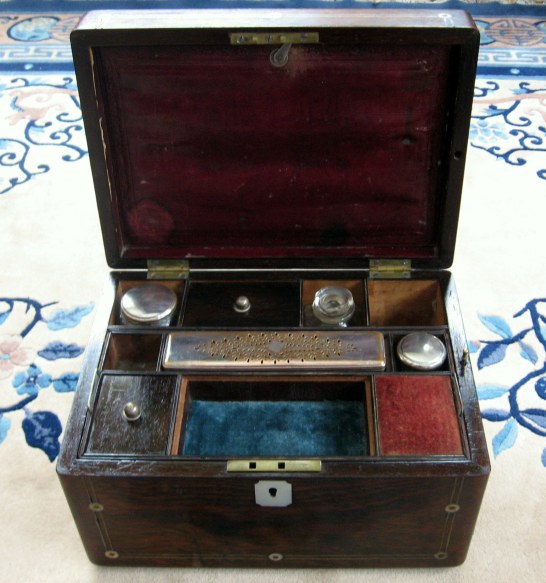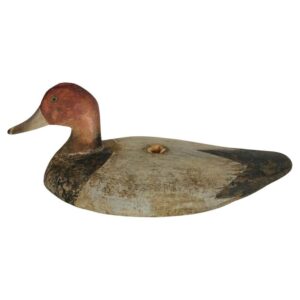
A period drama is a right proper feast of antiques. The proper choice, use and display of period antiques are as important to the production as the dialogue, costuming and historical accuracy. When the research is done right, the period set of a film is a work of art in its own right. The set can also be quite educational, showing antiquated objects as they were used or appreciated during their original period.
The famously successful Downton Abbey provides a beautiful illustration of using antiques correctly… of getting it spot on. Sure the choices are correct, the assemblages make sense, and every room we see has been furnished entirely appropriate to the time period. But decorating the set is the easy part.
More subtle and more important is how the antiques are used, how they feature in the daily life of the characters. Close attention eventually shows how the antiques actually go a long way to molding the characters themselves. They are part and parcel to the fundamental lifestyle we are observing, including their manners and morals, their work and leisure, the very fabric of their daily lives. The plot itself, upon reflection, could not develop independent of the antiques. In other words, there’s no mistaking which character belongs where: Lord Grantham lives in the Gothic Revival manor house, Mr Taylor resides in the room over the carriage house, and someone squatting in an East End dosshouse just wouldn’t be allowed on the property at all.
Look at life below stairs: how most of the long day’s hours are spent in the use and maintenance of the antiques. Never an idle moment for Daisy Mason, the house maids and footmen! There is at hand an implement or device for nearly every activity or want in the period life, and nearly each piece calls for an endless cycle of cleaning and oiling, buffing and polishing, waxing and mending… you can understand vividly now the sweat and tears that went into that deep patina so prized today!
Life above stairs is likewise intimately tied to a never-ending series of actions, almost rituals, which form the daily routine, all dependent upon the physical culture (in other words the antiques). Just the basic maintenance of life, the needs of room and board and attire, is so time-consuming and one expects exhausting for the toffs, let alone the poor valet and lady’s maid. One wonders whose time is more consumed by all this: the master’s or the servants. It’s a wonder anything ever got done in business or empire, aside from dressing and eating!

Think back on all those scenes with the family arising and preparing for their day: all the fuss and bother with an elaborate morning toilet and attire. Remember the bachelor chests and linen presses? The layers upon layers of clothing whose names we can’t even remember? The detachable cuffs and collars, and the special fitted boxes to hold them? The sad irons and goffering irons, skirt lifters (we actually have one at the shop patented by the Duchess of Windsor!), pins and brushes beyond description, and all those other clever little gadgets and devices we no longer recognize… the fundamentals of daily life just a few generations past. Never mind all the bits and bobs a lady uses for her cosmetic needs, think about just how many different sized and styled brushes a gentleman required to become presentable!
The same bustle of activity (pardon the pun) is repeated for the afternoon, evening, every special engagement, and of course retiring. The sheer volume and variety of clothing, dressing implements and accessories is boggling, let alone the specialized furniture to enclose them all, the caddies and etui to organize them, the tools and devices to care for them, mend them and keep them serviceable and pristine. The very lifestyle not only utilizes, but is in fact dependent upon and in many cases the result of the antique accoutrements. It would be hard for us today to even imagine such a routine of daily life, were it not for the surviving antiques which quite literally provide a first-hand glimpse into our history. It’s hard enough for us today to just learn the vocabulary that was required… one would never make it to the ball on time if you kept stumbling along with “I say Jeeves, have you seen that thing-a-ma-jig for straightening the whats-it on my do-hickey?”
And then there’s the dining! No wonder such a large staff was needed to prepare, serve and clean-up after the daily series of breakfast, tea, dinner, tea, supper, brandy and port, tea, and whiskey (the nightcap of course). Remember that even a humble lower middle class or artisan’s home would keep at least a cook, a maid and perhaps a manservant. I’ll leave this discussion of dining for another blog (or series of blogs), and just mention one example here: something simple and self-contained, a matter of just one course and minimal cooking… how about tea for instance.

Right then: the cook has to boil up the kettle and the second kettle; the butler has to unlock the tea caddy or poi, select and blend the tea leaves requested or appropriate for the time of day and the nature of the guests; the cook or trusted assistant (no doubt having served at least ten years in intense understudy of the tea process) now must spoon precisely the correct amount of loose leaves into the tea pot and fill with water near but not quite boiling; the butler or senior maid gathers the tea pot, hot water kettle on hinged stand, covered sugar bowl (filled with the precious sugar just nipped off the sugar cone kept in its locked caddy), milk pitcher (most likely warmed to just above body temperature), and slop bowl (to receive the spills of cold tea prior to refilling a cup), plus various utensils including a tea strainer and under-plate, sugar tongs, and stirring spoon, arrange neatly on a matching tray and deliver to the morning room (or dining room or study or library or madam’s sitting room or master’s sitting room or the conservatory or the solarium or… you get the idea); since we all realize it would be simply barbaric to take tea without at least a digestive, there must also be a second tray with biscuits, scones, cakes or sandwiches (depending upon the time of day and the inclination of the host) arranged on appropriate plates, with the necessary serving slice, knife, fork and tongs; meanwhile a junior maid has laid the tea table with the necessary tea cups and saucers, cup plates, tea cake dishes, dessert knives and forks, demi-tasse or tea spoons, serviettes… have I forgotten anything? No doubt. The actual pouring and serving, refilling of the pot, spilling and refilling of cups, will be done by a junior maid, senior maid, valet, housekeeper, butler, or even the hostess herself, depending upon the social status of any guests; then the whole caboodle need be taken away to the kitchen, cleaned, dried and polished bright in ready for the next call for tea. This might be in just five minutes time. No wonder the Japanese evolved their ever so simple tea ceremony.
As we examine and appreciate period antiques, and contemplate their place in period lives, it becomes clear that such a standard of living could not be kept up. In fact at Downton Abbey we are witnessing the last gasp of this Victorian excess, as the Edwardian period fades and the world hurtles into the modern era. The new demands of modern life require efficiency and speed. Convenience and haste come to rule over style and elegance. Some would call it progress…

